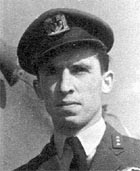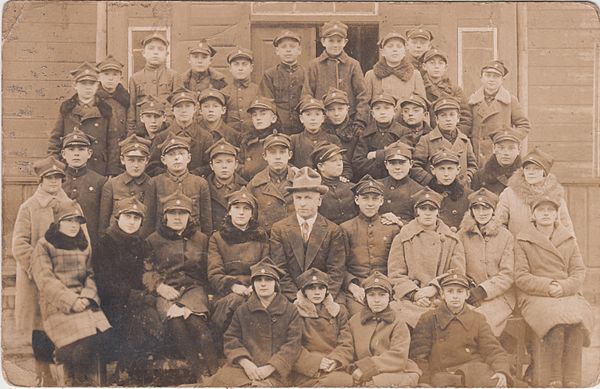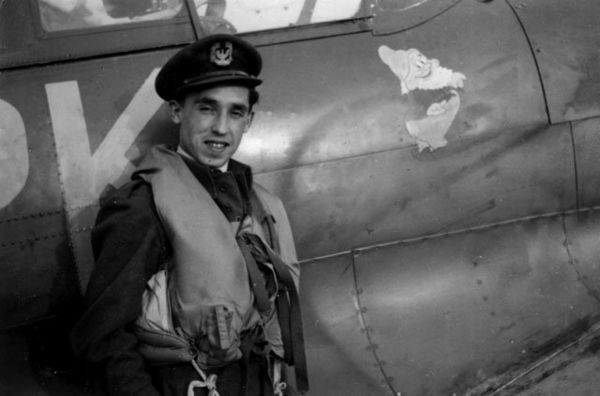Franciszek Kornicki facts for kids
Quick facts for kids
Franciszek Kornicki
|
|
|---|---|

Franciszek Kornicki, 1943
|
|
| Born | 18 December 1916 Wereszyn, Lublin Governorate, Vistula Land, Russian Empire (now Wereszyn, Poland) |
| Died | 16 November 2017 (aged 100) Worthing, England |
| Allegiance | |
| Service/ |
|
| Years of service | 1939–1972 |
| Rank | Pułkownik (Polish Air Force) Squadron Leader (RAF) |
| Commands held | No. 308 Polish Fighter Squadron (1943) No. 317 Polish Fighter Squadron (1943) |
| Battles/wars | |
| Awards |
|
Franciszek Kornicki (born December 18, 1916 – died November 16, 2017) was a brave Polish fighter pilot. He flew planes for Poland, France, and Britain during World War II. After the war, he also served in the Royal Air Force (RAF) in the UK. He lived to be almost 101 years old. He was the very last surviving Polish fighter squadron commander from World War II.
Contents
Early Life and School
Franciszek Kornicki was born in a village called Wereszyn in Poland. This was on December 18, 1916. He was one of six sons. His father worked as a coachman on a large estate.
Franciszek went to the village school first. Then, he went to a bigger school, a gymnasium, in Hrubieszów. He stayed there and paid for his schooling by helping other students with their lessons.
Joining the Air Force
Franciszek wanted to study more at university. But he couldn't afford it. So, he joined the Polish Air Force academy in Dęblin. He was a cadet, which is like a student in military training.
In July 1939, he finished his studies. He was one of the top students in his class. He was on a short break when he got urgent orders. War was coming, and he had to report to his unit right away. He said goodbye to his family. He never saw his father again. It would be 25 years before he saw his mother and brothers.
Fighting in World War II
When Germany invaded Poland on September 1, 1939, Franciszek was a pilot. He flew older planes that didn't even have radios. The German fighter planes were much better and faster. The Polish Air Force was greatly outnumbered. They lost many planes and pilots.
To keep fighting, Polish pilots were told to fly to Romania. Those without planes, like Franciszek, had to travel by land. He crossed into Romania with other pilots. From there, they traveled to a port and sailed to France.
It took several months for Franciszek to train on French fighter planes. But soon after he finished, France surrendered to Germany. Franciszek and thousands of other Poles went to a port. They were evacuated by ship to Liverpool, England. His first job there was to learn English.
Serving in Britain
By August 1940, many Polish airmen were in Britain. They formed sixteen fighter and bomber squadrons. These squadrons worked with the British Royal Air Force (RAF).
Franciszek trained on new planes. In October 1940, he joined 303 Squadron. This squadron had just fought bravely in the Battle of Britain. He then flew the famous Hawker Hurricane plane. In January 1941, he moved to 315 Squadron. This squadron later got the even more famous Supermarine Spitfire planes.
On July 23, he flew his first mission over France. He had to stay very close to his leader. He said he was "drenched with perspiration" after landing. He was trying hard not to crash or lose his leader.
In February 1943, Franciszek became a commander. He led the No. 308 Polish Fighter Squadron. He was only 26 years old. This made him the youngest squadron commander in the Polish Air Force. Later, he also commanded No. 317 Polish Fighter Squadron.
After more than three years as a fighter pilot, he moved to a ground job. He became a liaison officer. He also attended staff college. He served in staff roles in the Netherlands, Belgium, and Germany. The war in Europe ended just as he was about to train on the newest Spitfire.
For his bravery in the war, he received important awards. These included the Silver Cross of the Virtuti Militari and the Cross of Valour.
Life After the War
After the war, Franciszek did not want to return to Poland. It was now controlled by the Soviet Union. He studied at a college in Nottingham. In 1948, he married Patience Williams. They started working as hotel managers.
In 1951, the RAF needed more pilots. Franciszek joined again as a Flight Lieutenant. He started flying planes once more. In 1953, he moved to the Catering Branch of the RAF. He worked at RAF bases in England, Malta, Aden, and Cyprus. He was promoted to Squadron Leader in 1961. He retired from the RAF in 1972. After that, he worked for other government groups.
Franciszek and Patience had two sons, Peter and Richard. Many of his personal items are now in the Polish Museum at RAF Northolt. One of the planes he flew, a Spitfire, is still flying today! He got to see it again in 2010 when he was 93 years old.
He received more honors later in life. In 2011, he got the Commander's Cross of the Order of Polonia Restituta. The President of Poland gave him this award in 2012. In November 2012, he was promoted to the rank of full colonel in the Polish Air Force. He turned 100 years old in December 2016.
In 2017, the RAF Museum held a poll. People could vote for 'The People's Spitfire Pilot'. Franciszek Kornicki won by a huge number of votes! This showed how much he was admired. He also received the Gold Medal of Merit for National Defence from Poland.
Franciszek Kornicki passed away on November 16, 2017. His wife, Pat, died ten days later. They had a joint funeral. Important people from Poland and the RAF attended. They were buried together in Northwood Cemetery. The Polish Air Force and the RAF honored him with special ceremonies.
In 2019, he was given another promotion after his death. The President of Poland promoted him to Generał Brygady. This is a very high rank.
Images for kids








